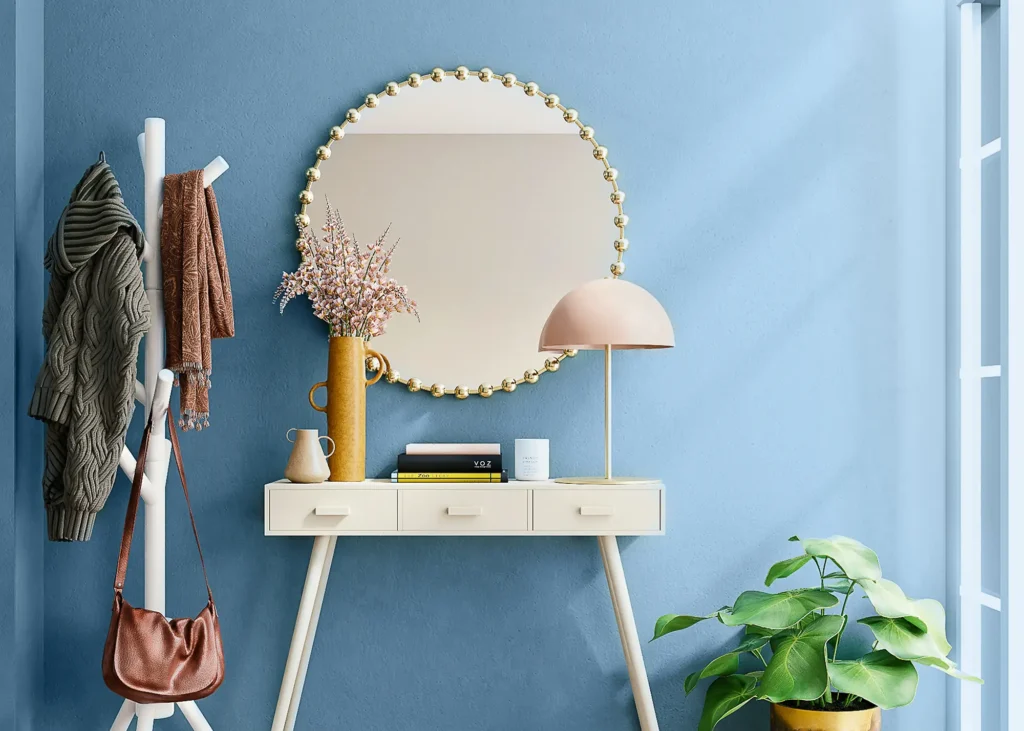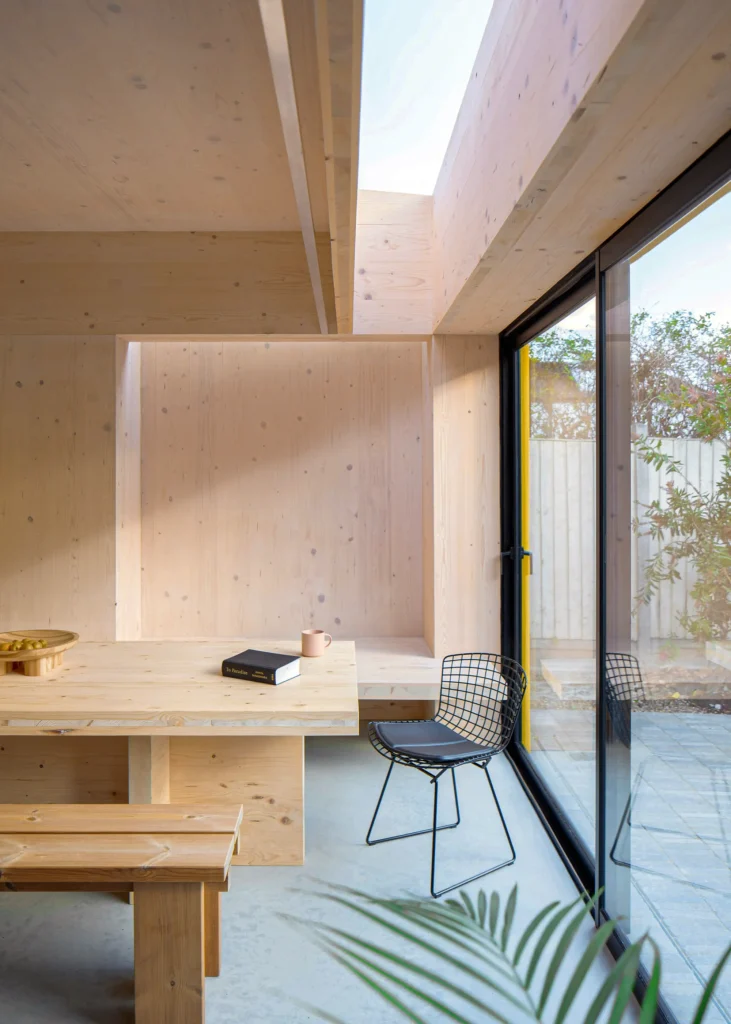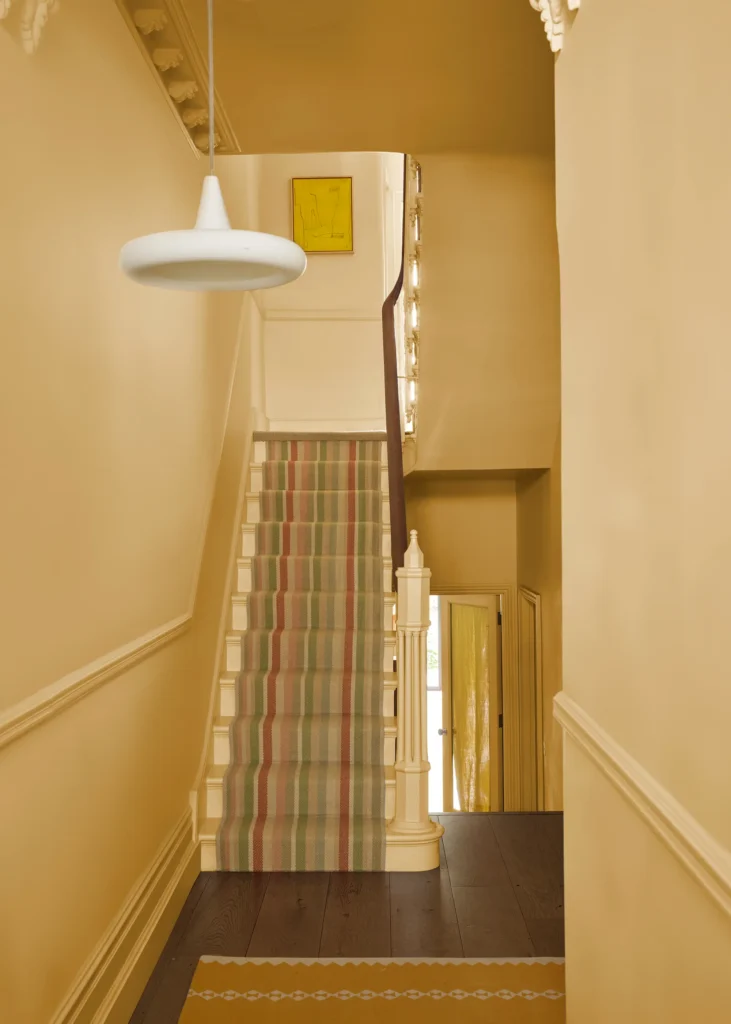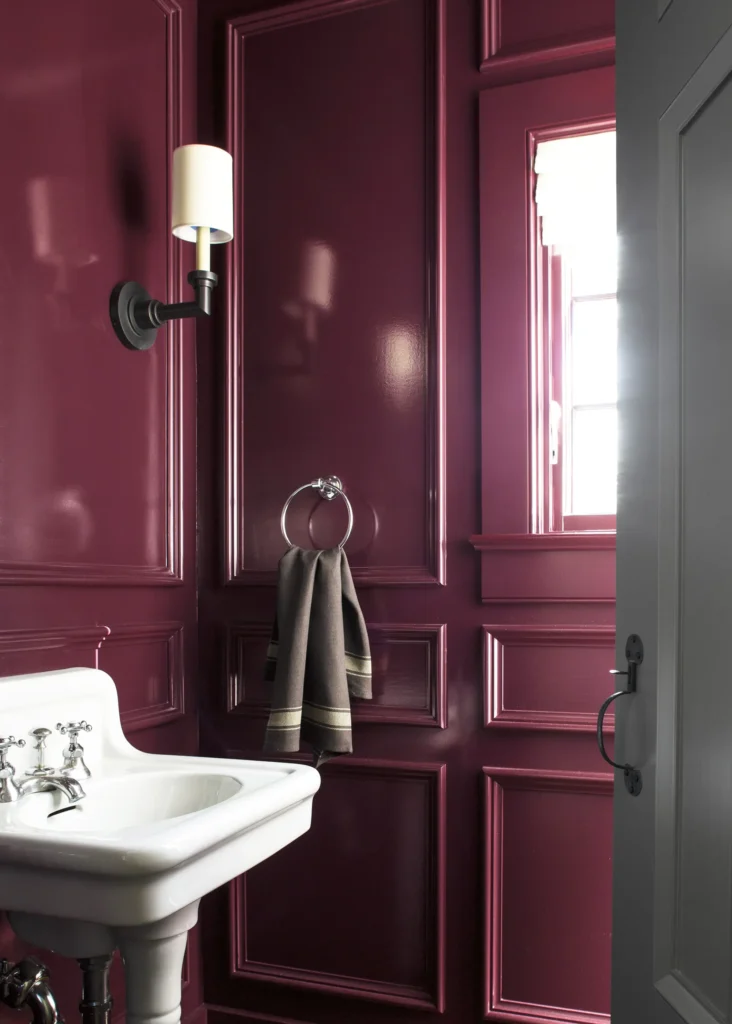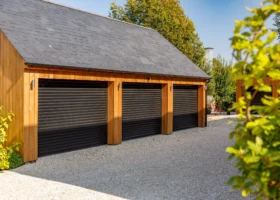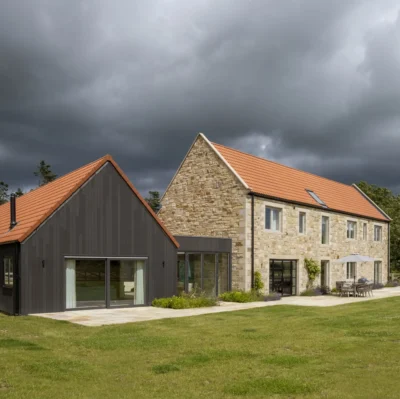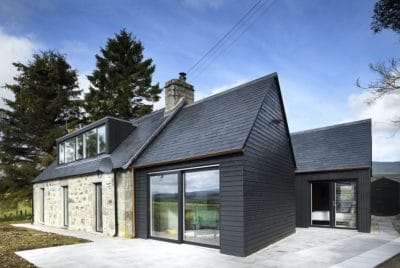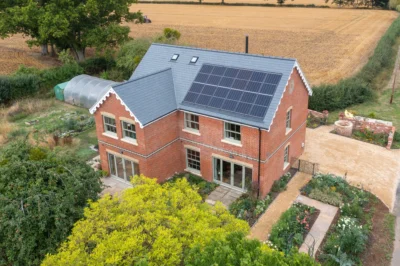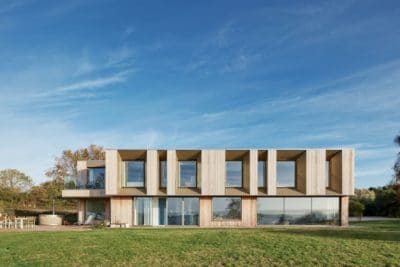Interior Wall Decoration: Your Guide to Plasters, Paints & Wall Finishes
Your home’s interior walls play a vital role in creating a comfortable and personalised space, so it’ll be important to consider all the options when deciding how they look.
You should also pay attention to your home’s overall construction and wall foundations, as this will influence how you’re able to decorate them. Period homes for example, require breathable wall coverings to ensure no water is locked in as this will speed up the appearance of damp and decay.
But with so many choices available for interior wall decoration, from clay to high-gloss, how can you decide which is best for your project? Let’s take a look at the different options and what you need to consider before setting out on your decorating venture.
How Are Interior Walls Constructed?
Your internal walls will be constructed at first fix stage, marking your first opportunity to see how your rooms will be divided (and probably your last chance to affordably change them). Most are built with studwork, as it’s cheap, space-saving and quick to put together, plus offers an easy place to run services.
If necessary, stud walls can be beefed up to do some structural work, too. However, in some cases it may be necessary to switch to standard blockwork masonry to achieve the required strength in a reasonably slim profile. It’s down to your project’s structural engineer to determine which, if any, internal walls are to be load-bearing – and the requirements should be clearly indicated on the design drawings. As a rough guide, the presence of architectural features such as open-plan layouts, high ceilings and cantilevered staircases might all indicate the need for blockwork.
Learn More: Self Builder’s Cost Guide: Walls and Insulation
Do I Need a Base Layer?
Blockwork and brick interior walls can be left unfinished for a characterful or industrial-style interior. The base layer for most internal walls, though, is some kind of plaster. Gypsum-cement products are common as they’re very cost-effective, well understood by trades and reasonably quick drying, meaning you can get on with decorating swiftly. Wet plaster may involve a thick build-up in multiple coats, and can even be left exposed or dry-tinted at the mixing stage to create a soft through-colour.
The other option is to use plasterboard or alternative wall cladding products (such as tiles or timber), which can be stuck onto masonry walls with a good adhesive – known as dot and dab. In timber frame homes, the walls are nailed or screwed in directly.
For stud walls, consider adding an acoustic wool insulation behind the plasterboard to reduce any sound transfer between rooms. Plasterboard only needs a skim layer of plaster on top which can be decorated with your choice of finish.
How Can I Choose the Right Surface Finish?
Choosing a surface finish can be difficult as there are so many options. Many modern decorators are choosing standard paint alternatives like clay- and lime-based plasters for their organic feel, texture and breathable properties. Both of these options can be tinted, pigmented and even sculpted. Clay surfaces absorb toxins and will regulate dust, too, so make for a healthy, low-maintenance finish that can prove well worth the investment.
Standard trade paint formulas are still worth considering, as they have been honed over decades to offer a good, durable finish at a low price point, and many now feature eco-friendly properties. You can also have pretty much any colour mixed into sample pots to try out at home to find the perfect fit. Paints are either matt or glossy (dictated by their resin content) – test out the options to see what complements your project and works best on the wall’s surface.
As mentioned, timber panels, exposed brick or tiles are also popular and can make a real statement when designed into a scheme from the start. With these, you don’t have the hassle of repainting and ongoing maintenance is fairly simple. While you may consider doing this DIY, just as with any wall finish, bear in mind the work will be fully visible in situ – so professional installation may be worth it.
From exposed brick to tinted concrete, let’s take a look through the different options you have when deciding on a finish for your home’s interior.
Leave Your Brick Walls Exposed
Exposed brickwork or brick slips will compliment projects from modern self builds to farmhouse renovations. Older homes will typically have brick underneath the plaster walls, which may still be in good condition and could be exposed or restored by repointing. Choose a matt brick sealant to fill cracks and prevent draughts.
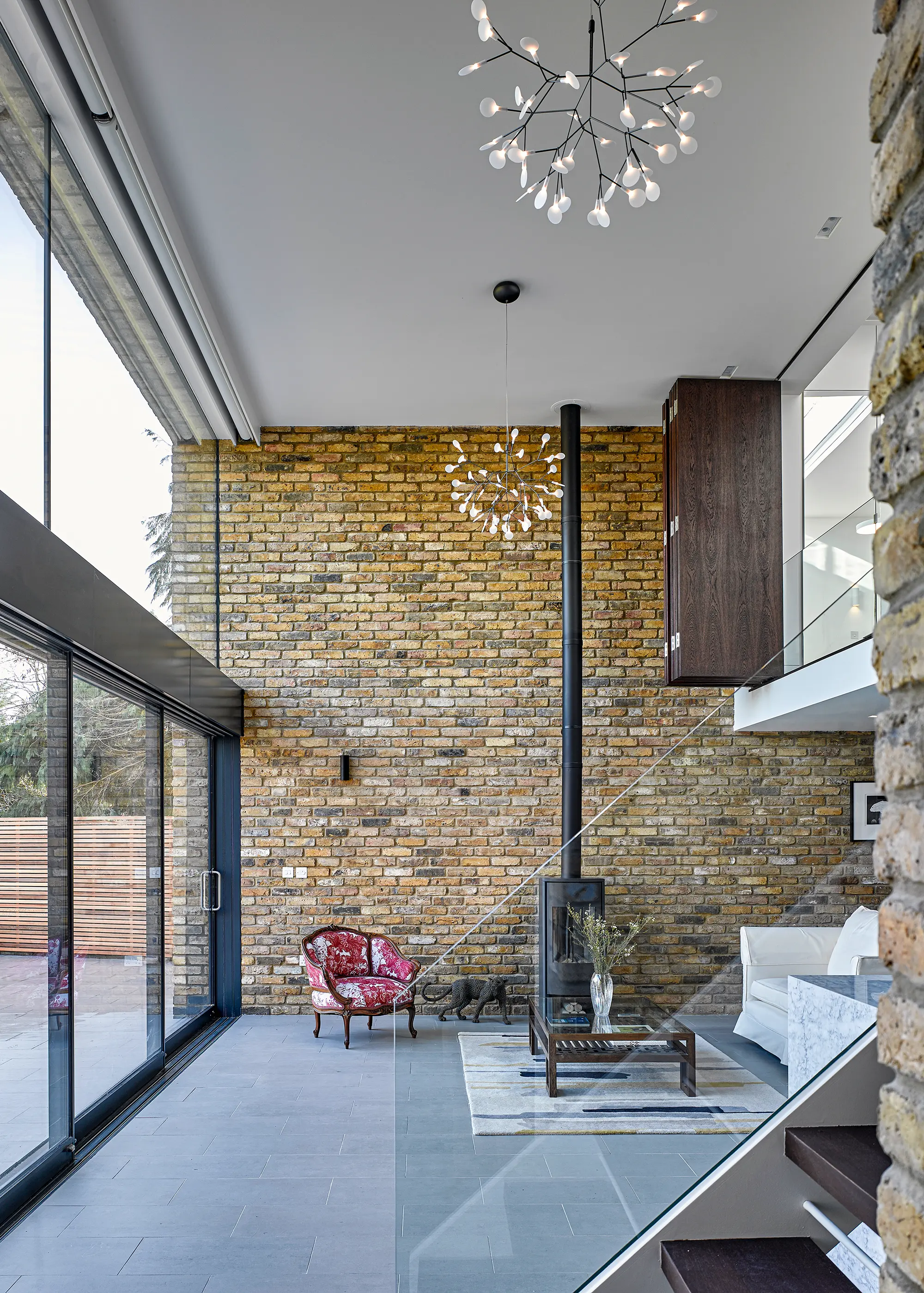
Photo: Nick Guttridge
For this Build It Award-winning project, Willowbrook, Paul Archer Design specified a mix of second hand, reclaimed and engineering bricks which follow from the home’s exterior to the interior for a striking, individual look.
More Ideas: Creative Brick Design: Using Bricks Innovatively in Your Self Build
Add Character With a Plaster Wall Finish
Clayworks’ Tadelakt wall finish in a soft purple has been used in this bathroom, designed by Gestalt Developments. Originally developed in Morocco, Tadelakt is a lime-based plaster finish that has a polished, stone-like texture.
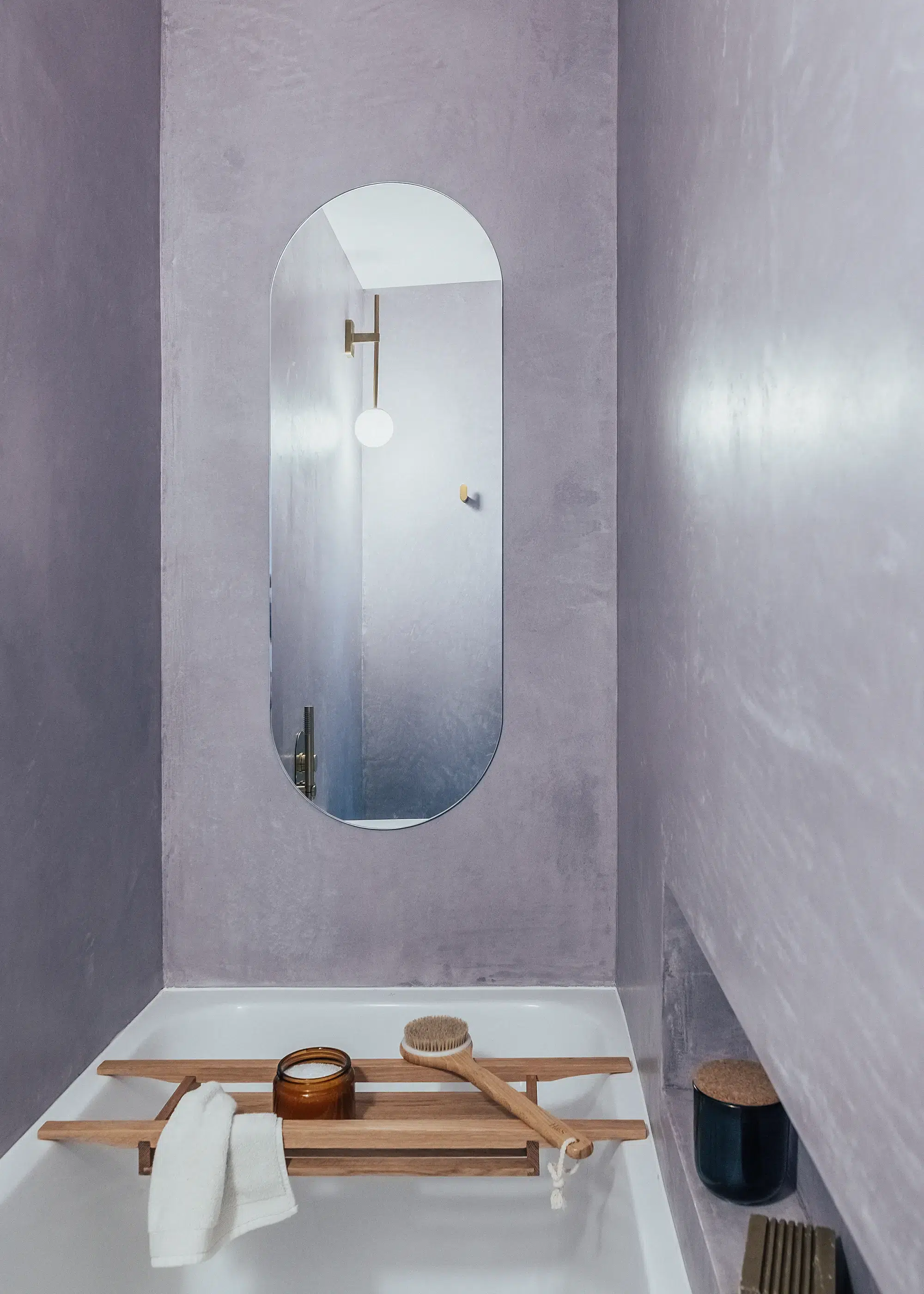
Photo: Taran Wilkhu
It’s naturally water- and mould-proof, so makes a durable and stylish option or replacement for tiles in bathrooms and kitchens, giving a trendy plaster look without the hassle of worrying about water damage.
Use a Bright & Simple Emulsion Paint
Emulsion paint makes an easy and effective finish for interior walls where you’re after a pop of colour, and lasts well across properly-prepared walls and ceilings. Part of the fun is testing out all the shades available to find the perfect hue.
This cheerful example is YesColours’ Calming Blue water-based emulsion paint. It has been manufactured with zero added VOCs and the pigment technology means minimal fading over time, reducing the need to repaint. YesColours also ships its paint in a recyclable pouch, limiting any waste and environmental damage from start to finish.
QUICK GUIDE Wall decoration & indoor air qualityGood air quality inside the home is particularly important for everyday health, and the wall finish you choose can come with a host of benefits that’ll create a better living environment while contributing to your home’s character. Here’s what you need to know: What are VOCs and why are they important when decorating your home?“Volatile organic compounds (VOCs) are the culprits behind the strong odour of some oil and solvent-based paints,” says Charlotte Cosby, creative director at Farrow & Ball. VOCs can be irritants, but with proper ventilation the risks to your health are low. Even so, it’s recommended that you opt for a low-chemical emulsion for interiors. “Ideally, it should be water-based, low-VOC and therefore breathable for you and your family,” says Emma Bestley, cofounder and creative director at YesColours. Which wall finishes are best for improving air quality?Clay and lime plaster finishes are some of the best options on the market. Both have extremely low VOC content, and clay plaster is often applied without a surface finish, meaning there’s no need to repaint. “Clay remains porous, which is why it’s so breathable and absorbant of humidity,” says Clare Whitney, business development and sustainability manager at Clayworks. Breathability is important for older or naturally-built houses, where the structural walls are designed to absorb and release moisture – so it’s crucial to use finishes that won’t lock water into the building fabric. If you do want a painted finish, high-quality water-based products are the way to go – and you can opt for lime, clay, chalk and other natural materials to suit your goals. Why should you consider investing in a high-quality finish when decorating?Choosing a top-end finish often means spending a little more, but it will have a marked impact on your interior and wellbeing. “Making sustainable decorating decisions will not only make you feel good, but it’s better for the planet, too,” says Emma. So, opting for organic materials and low-VOC paints can minimise indoor air population and reduce your environmental impact. Be sure to check products’ certifications before buying. Learn More: Choosing the Right Materials for a Period Renovation |
Leave Timber Wall Panels Exposed
Wood panelling can be a great, cost-effective way to cover and decorate over uneven or patchy internal walls. But if you’re using some types of timber-based building system, the look can also be achieved simply by leaving the structure on show – providing a distinctive natural, textured look.
London-based studio Unknown Works constructed this terraced house extension using cross-laminated timber (CLT). The CLT panels were left exposed inside the addition and have been incorporated into the interior scheme and furniture for a clean, cohesive feeling.
Read More: Structural Systems and Building Methods: Which is Best for Your Self Build?
Add Colour Dyes to Concrete
For a raw finish and industrial edge, creating a plaster-effect wall or deliberately leaving the material on show is a popular trend. In this stylish extension, designed by Gresford Architects, both the internal and external concrete walls have been cast in-situ and finished with a pink powder dye, creating a seamless transition between indoor and outdoor spaces.
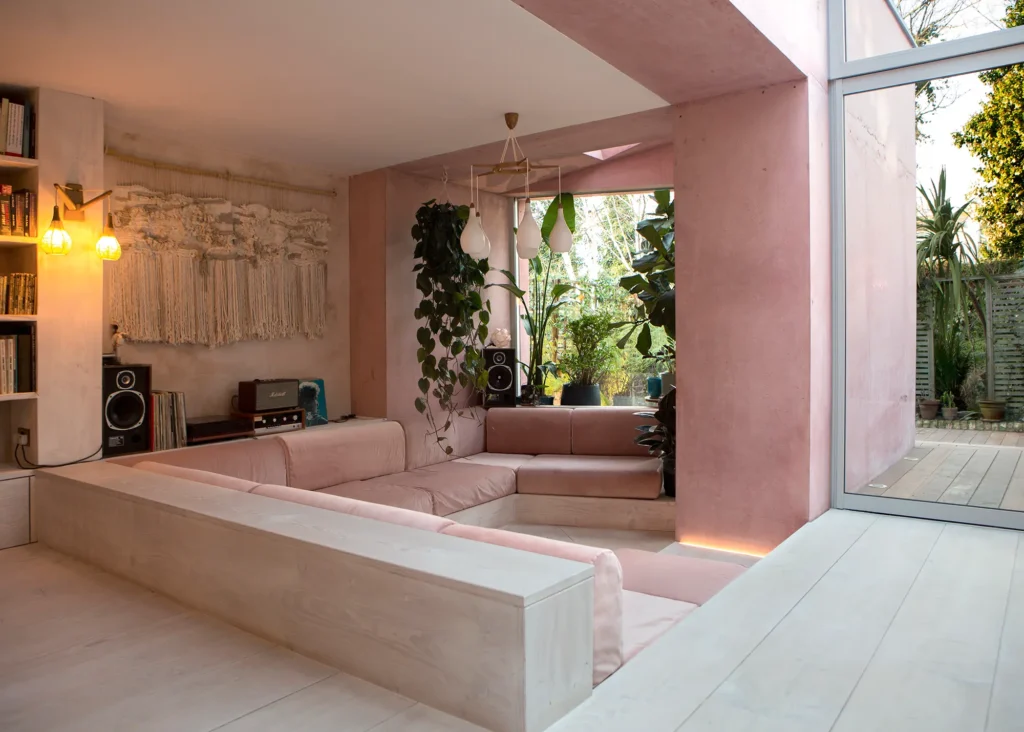
Photo: Andrew Ogilvy
The perfectly unfinished walls – which complement the relaxed interior decor – offer the home a unique quality by illuminating any imperfections such as air bubbles and scuffs.
Use Matt Paint For a Striking Look
Ultra-matt but gleaming with charm, Dead Flat by Farrow & Ball is a water-based, low-VOC paint that has just a 2% sheen, dramatically changing how it interfaces with light without limiting the colour’s vibrancy.
The emulsion is hardwearing and well-suited to areas susceptible to chipping and scuffing. It retains its look across a variety of surfaces, including wood and plaster, making a perfect finish that can be used on rooms from top to bottom. This shade is Sudbury Yellow No.51.
Thinking about how you can incorporate your staircase into your home’s interior design: 20 Staircase Design Ideas: Plan & Design Your Perfect Staircase
Decorate Your Walls With Fluted Plaster
As part of this renovation to an Edwardian terraced house, designed by Flower Michelin Architects, a dramatic and bespoke fluted plaster wall was added to the hallway, staircase and first floor landing by specialists Cornice London.
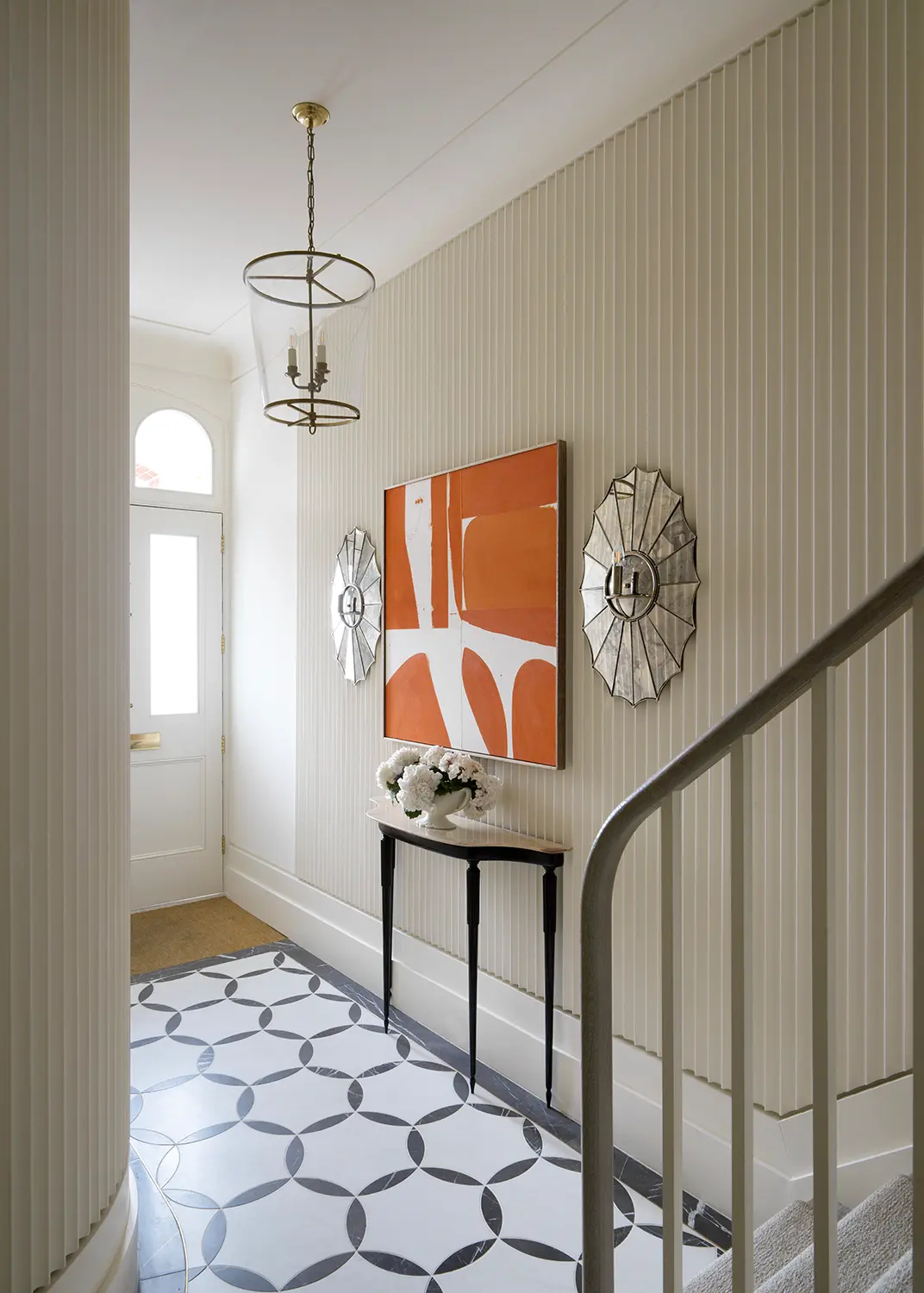
Photo: Stale Eriksen
The glass reinforced gypsum blend makes a sturdy and innovative option for internal walls, avoiding the need to repaint or worry about colours fading and scuffing, especially in high-traffic areas such as the entranceway.
Transform a Small Space With Glossy Paint
Gloss paint can pack a punch in small spaces, as its glassy mirroring qualities allow light and shapes to bounce around the room where a matt paint wouldn’t. It’s easy to clean and is highly durable, so makes an apt finish for areas exposed to water such as bathrooms.
It’s important to prepare the surface with a primer or undercoat, though, as any imperfections will offset the sheen. This Advance High Gloss from Benjamin Moore makes a beautiful statement in Carter Plum.
Looking for ways to upgrade your home without needing planning permission? Take a look at these 23 Projects You Can Do Without Planning Permission
Create an Organic Look With Clay Wall Finishes
Rust-coloured clay walls were chosen to complement the design of this extension to a stone cottage by Studio Weave. The clients wanted the new double-storey timber addition to remain in keeping with its rural surroundings, so opted for natural building materials that added a sense of warmth, such as terracotta, Douglas fir plywood and clay.
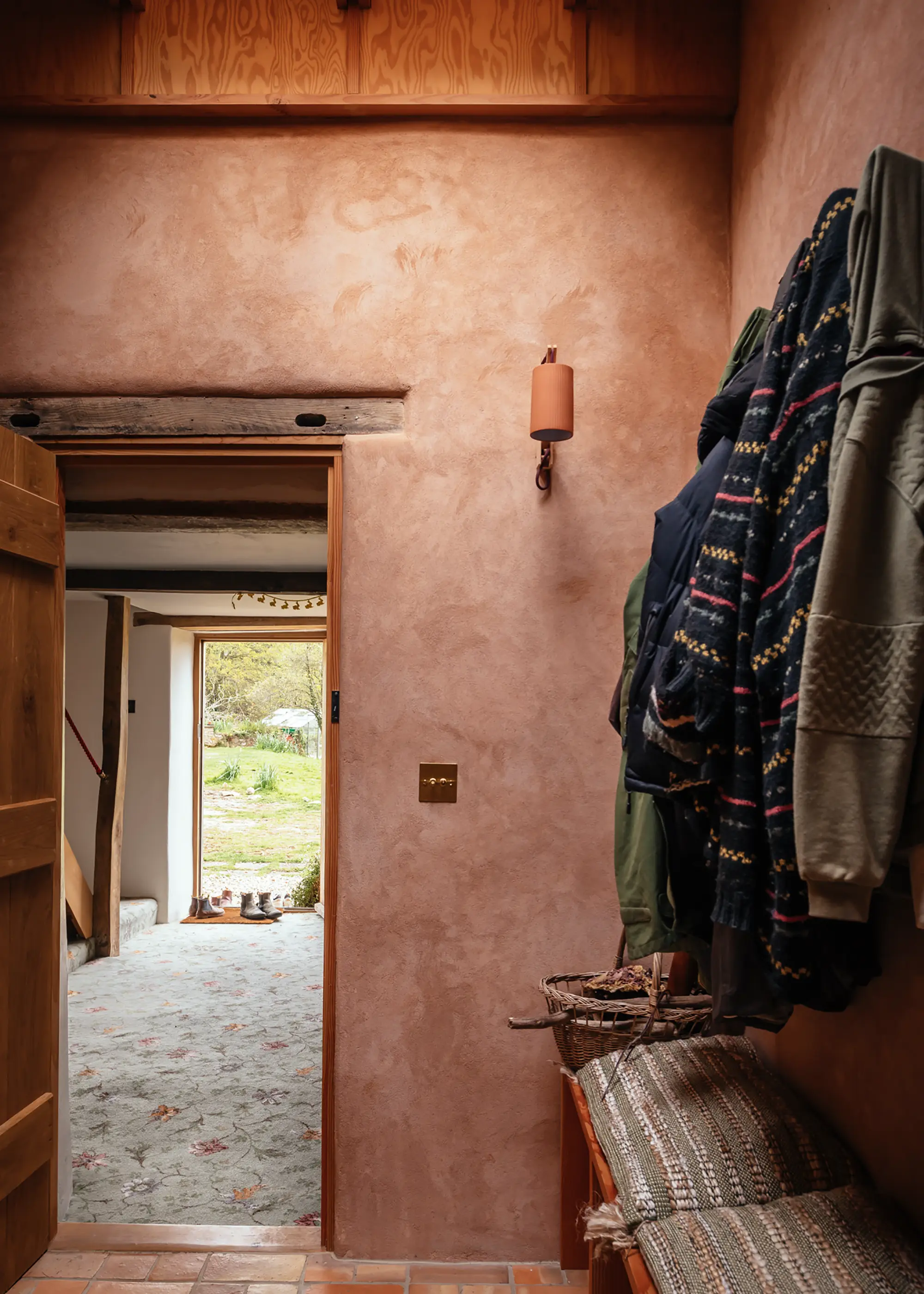
Photo: Jim Stephenson
The wall’s characterful finish suits the home’s scheme perfectly, as the clay’s breathable nature enables optimum indoor air quality.
More Inspiration: Contextual Design and Architecture: Self Builds That Respond to Their Location
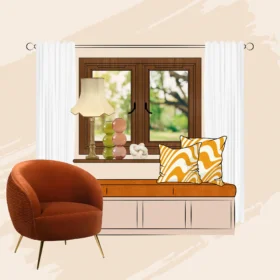
































































































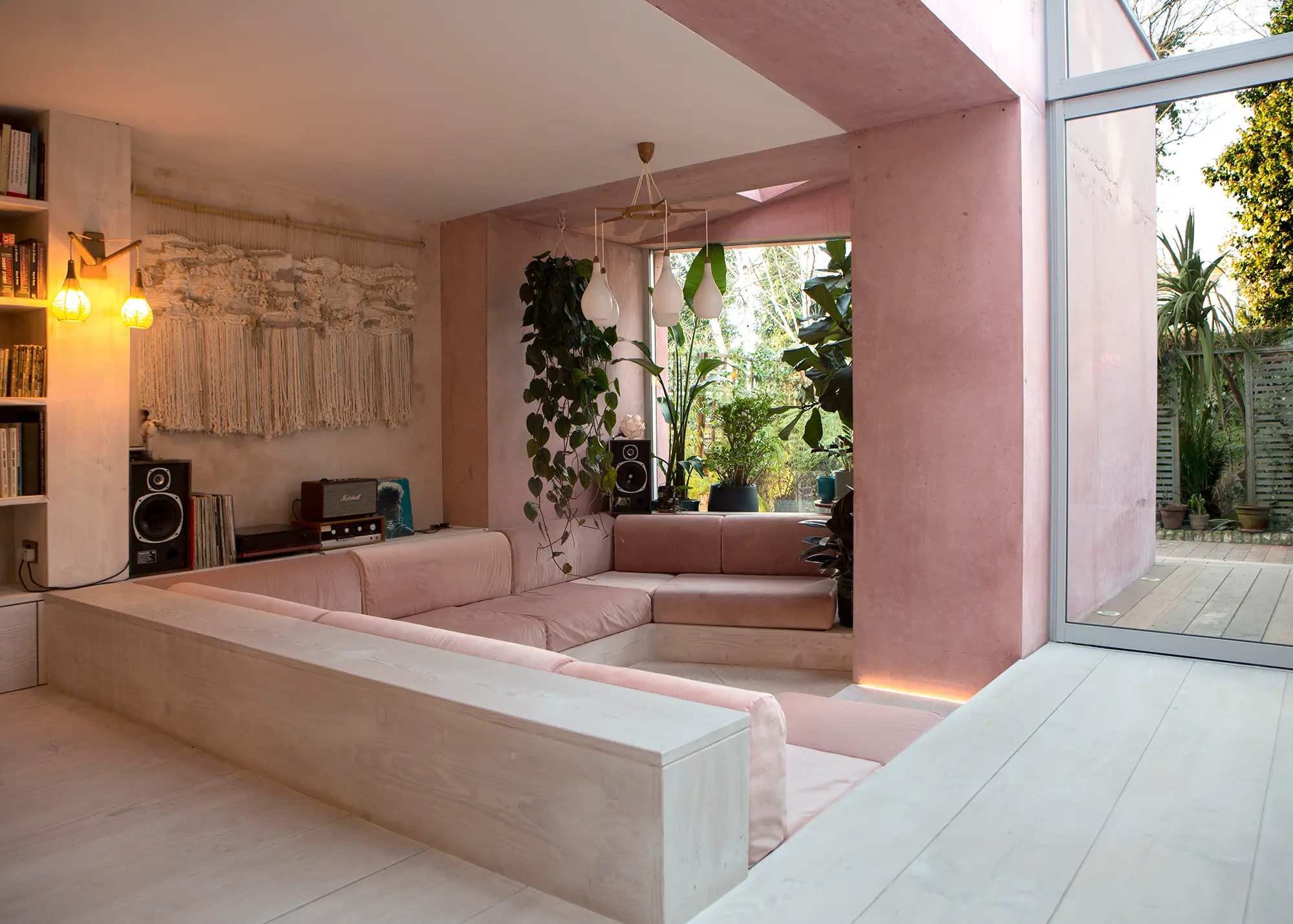
 Login/register to save Article for later
Login/register to save Article for later

